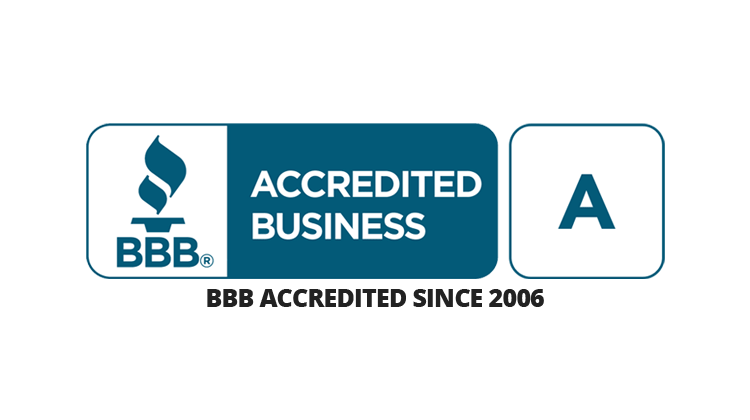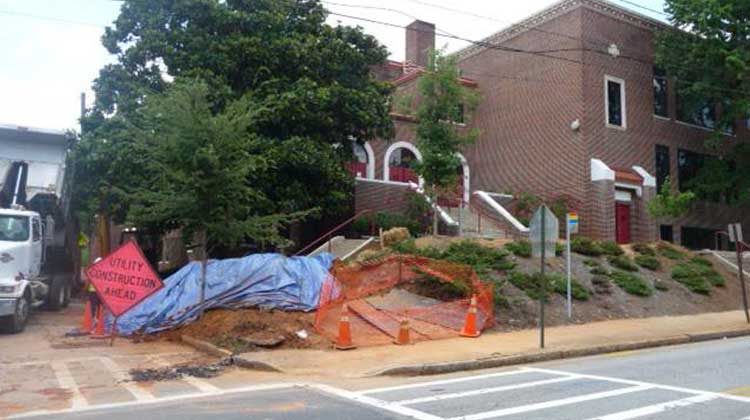Trust Atlantis Plumbing for all your Kennesaw plumbing needs. From water line repairs to sewer lines. Join the over 70,000 Satisfied Customers in Cobb County and Greater Atlanta.
Call Today For a Free Estimate or Second Opinion!
Choosing the right tradesmen to work on your home is one of your most important responsibilities as a homeowner. Choosing the right plumber is especially important given the potential for poorly installed or repaired plumbing to cause massive property damage. Of course, it may be tempting to save money by trying to do it yourself or to hire an unlicensed plumber. Unfortunately, those two options often result in profound regret for the homeowner.
Below you will see examples of some common plumbing problems faced by Kennesaw, GA homeowners. Along with those problems, you will see some of the reasons that hiring a licensed professional plumbing service can be beneficial and not the waste of money that some may think it is:
Water Line Problems
A plumbing leak can be a costly problem if you fail to catch it early on. Along with the cost of the wasted water, you may have to pay to repair damage done to your floors and walls. Signs of a leak include:
A Water Bill Spike
If you see a significant increase in your water bill, it may be caused by a leak somewhere in your home. Compare your most recent bills to those from the same period in the previous year just to make sure that it the spike is not merely a seasonal one.
Cracks in Your Foundation
Your house will settle after a while, which means that cracks are to be expected. However, you may have a leak if you find that your foundation suddenly starts to develop cracks. The constant seepage of water can weaken the foundation of your home thus causing cracks to occur over a relatively short period.
Mold
Even if you clean your bathroom on a regular basis, mold and mildew may continue to spring up if there is a hidden leak. Mold requires moisture and darkness to thrive, which means that a leaking pipe hidden in a wall or ceiling will provide the perfect environment.
A leaking pipe can provide a considerable amount of moisture so the longer it stays undetected the faster mold will grow.
Damaged Paint
Paint can blister if moisture gets between the paint and the wall and destroys the bond between the two. Walls with blistering paint are a clear sign of a leak, especially in a bathroom. The moisture and steam from the bathtub and sink are not enough to cause paint to blister. A hidden leak is the most likely source of extra moisture.
Wall or Ceiling Damage
Warped drywall is a clear indicator of a plumbing leak. This is because drywall will soften when wet. With enough exposure to water, it will start to warp and will eventually disintegrate. If the leak occurs in the ceiling, the result may be that the ceiling sags. Some of the accumulated water may leak out.
Damage to Floors
Your floors may buckle, crack or develop stains due to a hidden leak. Damaged flooring is often an indication of a leaking pipe under the floor; however, these symptoms may also be caused by water that has moved from another area.
The Smell of Stagnant Water
Old stagnant water from a leaking pipe is likely to start smelling after a while. If the smell persists even after you clean your home, you may want to start looking for signs of a hidden leak.
History of Polybutylene Pipe Problems
Polybutylene is a resin that was once heralded as the pipe material of the future and that was seen as a good substitute for copper piping. Its benefits included the fact that it was relatively inexpensive to make and install along with the fact that it was resistant to corrosion and easily maintained. During the 1980s, it was found that there were problems with how the pipes were engineered that caused them to fail all over the country. At first, manufacturers tried to blame the failures on poor installation, excessive crimp pressures and the use of certain types of fittings. Installers switched to using other types of fittings but the pipes continued to fail.
Failed polybutylene piping resulted in property damage that amounted to millions of dollars. There were leaks in homes and damage to underground water supplies. The makers of the pipes have never admitted that their product is faulty but they have settled class action lawsuits paying out close to a billion dollars.
Polybutylene pipe problems are thought to be the product of oxidants reacting with the pipes and resulting in them becoming brittle. These oxidants are in the chlorine used to purify water. The oxidants cause small fractures to develop in the pipes and over time, the piping system's integrity is compromised.
These days, polybutylene is no longer used but it is thought that there are millions of homes with this type of piping in place. In fact, it was still in stock in many hardware stores all the way up to 1990.
Checking for Polybutylene Piping in Your Home
It is important that you find out whether this type of piping is present in your home. You can check for it by looking at the pipes that go to your sinks and toilets. Compare your home's piping to pictures of polybutylene pipes on the internet. If you discover that your home has this type of piping, you will want to have it replaced as soon as possible. At the very least, you will want a plumber to come in and take a look at the pipes and tell you about their condition. A professional plumber can give you advice about the repair and replacement of your polybutylene pipes.
Sewer Line Problems
Your sewer lines are another area of concern. Most homeowners do not spend a lot of time thinking about them. They know that they transport wastewater to a septic system or sewer mains, but they know little beyond that. They are only likely to pay attention to their sewer lines if a problem arises such as a clog or a leak.
About Sewer Line Clogs
Clogged sewer lines can result in raw sewage backing up and spilling out of your drains. Obviously, this could result in a considerable amount of property damage and necessitate the replacement or repair of the sewer line. The good news is that it is possible to prevent serious sewer issues by paying attention to a few early warning signs.
A home's sewer lines are constructed like a tree. The main line would be the trunk and the branches would be the smaller lines that go to each separate fixture and appliance like your sinks, toilets and washer. A clog in one of the smaller lines means that that particular fixture or appliance will have trouble draining; however, a clog in the main line will mean that they all have trouble draining. With a clog in the main sewer line, the wastewater from a flushed toilet may back up into the bathtub or some other drain.
Early Warning Signs of Sewer Problems
- Gurgling Noises - These may occur upon flushing the toilet. You may also notice that when you a load finishes in the washer, the toilets start to gurgle. In some cases, you may see water around a floor drain.
- Slow Drains - If you find that all of the drains in your home have slowed down uniformly, this is a sign that you may have a clog in the main line.
- Strong Sewage Odor - If you start smelling sewage in your drains or in your yard, this is another clear indication that you need to have your sewer lines looked at by a professional.
Tree Roots and Sewer Line Clogs
Tree roots are the most common cause of clogged sewer lines. They are especially problematic in older homes. If steps are not taken to eliminate the tree roots, the result may be a complete block.
The tree roots are drawn to the moisture that escapes through cracks and joints in the pipes. The roots will grow towards the cracks or loose joints and penetrate them. Once they are inside the pipe, they will absorb the moisture inside the pipe and grow until they fill the pipe. Note that these roots can grow all year round, even in the winter when the trees may appear dormant. Eventually, you will wind up with a large root mass inside the pipe that will be very difficult to remove without the services of an experienced plumbing and sewer professional. The root mass can continue to grow until the sewer pipe ruptures. If a pipe ruptures, it will have to be replaced and this can be a very expensive project.
Certain pipe materials can withstand tree roots better than others. Pipes made with schedule 40 ABS and PVC have fewer joints and they are more tightly fitted, which means that they are less likely to invite root intrusion. On the other hand, vitrified clay pipes may be more vulnerable to damage from tree roots.
Are you new to Kennesaw? Atlantis Plumbing Welcomes you and we hope to be your plumber for life. Call us today for a FREE Estimate or a second opinion.
Kennesaw is located in northwestern Cobb County and its name comes from a Cherokee word meaning burial ground. The city was officially founded in 1887 but its history stretches all the way back to the shanties that housed the workers who constructed the Western and Atlantic Railroad. Other nearby towns that were established along the railroad include Vinnings, Smyrna and Acworth. Today, the city has over 30,000 residents and lies within the Atlanta Metro area.
We Offer Plumbing Services in Kennesaw, GA
Bartow County, Cherokee County, Cobb County, Dekalb County, Douglas County Fulton County, Gwinnett County, and Paulding County.
Acworth GA, Atlanta GA, Austell GA, Cartersville GA, Doraville GA, Douglasville GA, Hiram GA, Kennesaw GA, Lawrenceville GA, Lithia Springs GA, Loganville GA, Mableton GA, Marietta GA, Powder Springs GA, Rockmart GA, Roswell GA, Smyrna GA, Tucker GA, Villa Rica GA, Vinings GA, Woodstock GA, and surrounding communities.











